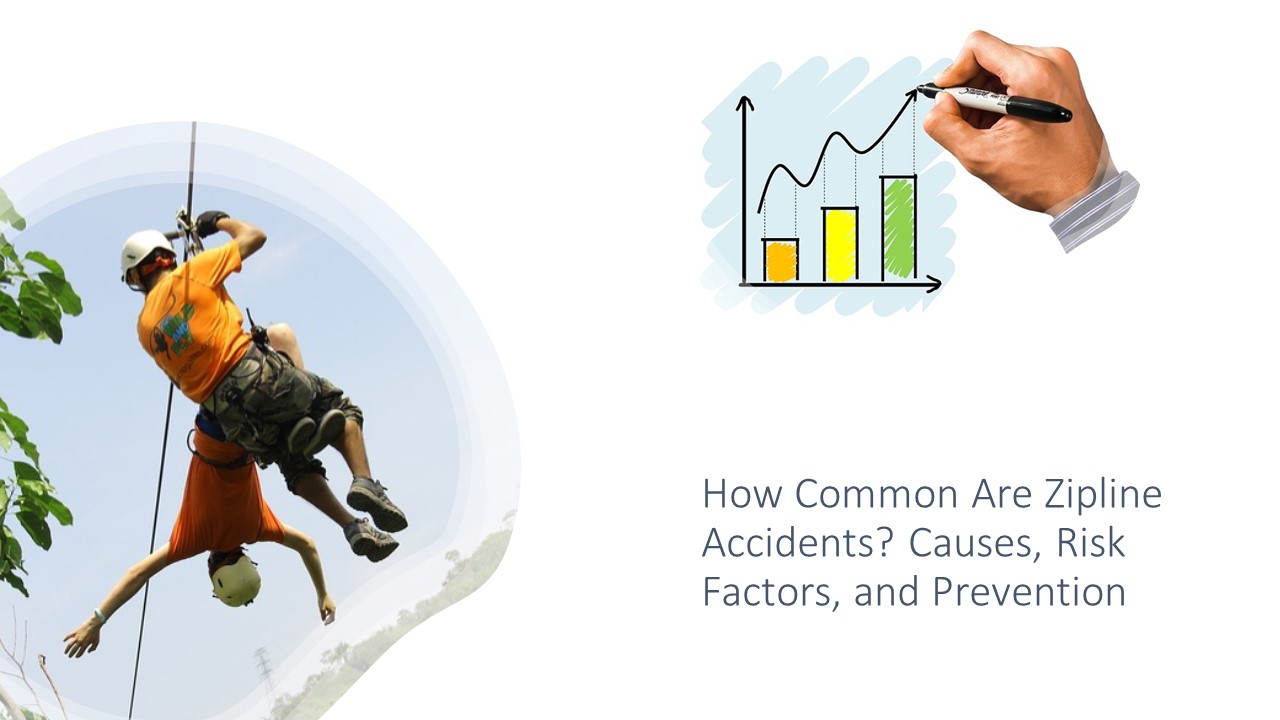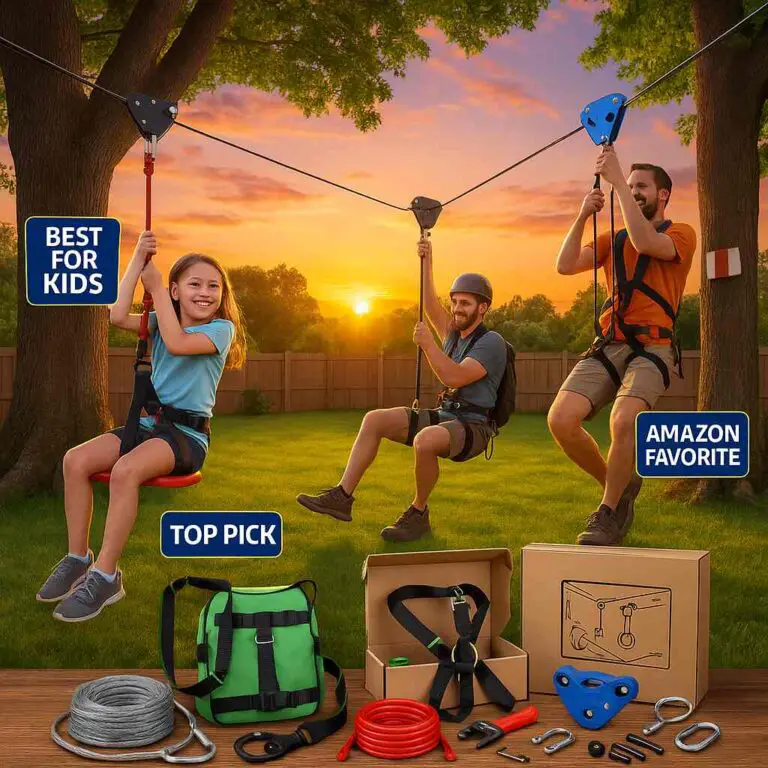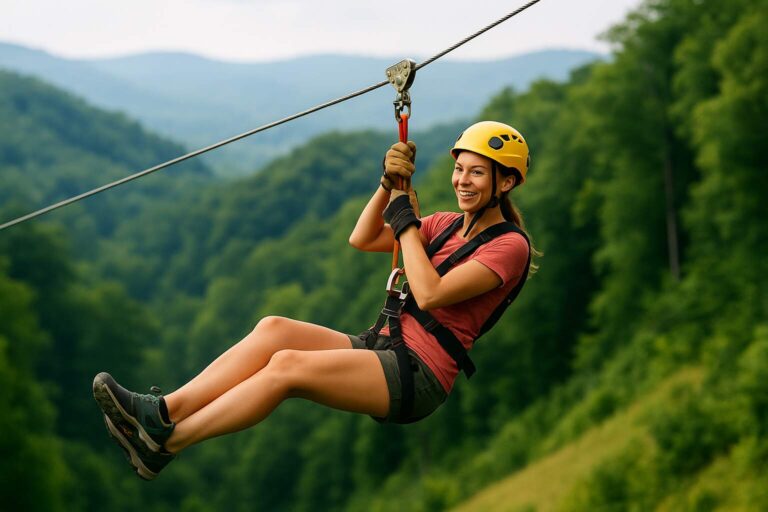Ziplining is an increasingly popular outdoor recreational activity, allowing thrill-seekers to glide through the air at high speeds while enjoying breathtaking views. However, as with any adventurous activity, there are inherent risks associated with ziplining. Many people may be curious about how common zipline accidents are and what can be done to prevent them. In this article, I will explore statistical data on zipline accidents, discuss the common causes and risk factors, and examine safety regulations and case studies of zipline accidents.
Let’s dive in!
Statistical Overview of Zipline Accidents
Zipline accidents are not as common as some may think. According to a study by the National Electronic Injury Surveillance System (NEISS), there were an estimated 16,850 zipline-related injuries treated in emergency rooms in the United States between 1997 and 2012. This averages out to approximately 787 injuries per year.
Of these injuries, the majority (approximately 70%) were sustained by children and adolescents under the age of 20. The most commonly reported injuries were fractures (33%), bruises/abrasions (30%), and sprains/strains (21%).
While the overall number of zipline accidents is relatively low, it is important to note that the number of injuries has been steadily increasing over the years. In fact, the NEISS study found that the number of zipline-related injuries treated in emergency rooms increased by over 50% from 2009 to 2012. This trend may be due to the increasing popularity of ziplining and the emergence of new zipline courses and attractions.
It is also worth noting that these statistics only account for zipline-related injuries that resulted in emergency room treatment and do not include injuries that were treated by other medical professionals or those that were not reported at all.
Causes of Zipline Accidents
There are several common causes of zipline accidents, including equipment failure, improper use of equipment, human error, and environmental factors.
Equipment failure can occur due to poor maintenance, manufacturing defects, or wear and tear over time. Common equipment failures include broken cables, malfunctioning pulleys, and faulty harnesses. Zipline companies must regularly inspect and maintain their equipment to minimize the risk of equipment failure.
Improper use of equipment can also lead to accidents. This can include failure to properly secure a harness, incorrect attachment to the zipline or failure to follow safety instructions. Zipline companies should provide clear and detailed instructions on the proper use of equipment, as well as have staff available to assist participants if needed.
Human error can be a contributing factor in zipline accidents. This can include misjudging the speed or trajectory of the zipline, losing control due to distraction or inattention, or attempting stunts or maneuvers beyond one’s skill level. Zipline companies can help prevent human error by providing proper training, setting age and weight restrictions, and implementing safety protocols.
Environmental factors such as wind, rain, and lightning can also pose a risk to zipline safety. Zipline companies should monitor weather conditions and adjust or suspend operations as necessary to ensure participant safety.
Overall, zipline accidents can be prevented through proper equipment maintenance and use, effective training and safety protocols, and careful monitoring of environmental factors. Consider reading my article the zipline dos and don’ts.
Risk Factors for Zipline Accidents
There are several risk factors that can increase the likelihood of a zipline accident, including weight, age, and health conditions.
Weight can be a significant risk factor in zipline accidents. If a participant is too heavy, they may generate too much speed and momentum on the zipline, making it difficult to control their descent and increasing the risk of collision or injury upon landing. Many zipline courses have weight restrictions in place to minimize this risk.
Age can also be a risk factor in zipline accidents. Young children may lack the strength and coordination necessary to properly control their descent, and may not fully understand the safety instructions provided by zipline staff. Older adults may have decreased physical abilities or health conditions that increase their risk of injury.
Health conditions such as heart disease, epilepsy, or vertigo can also increase the risk of a zipline accident. Zipline companies may ask participants to disclose any health conditions prior to participation and may restrict participation if they believe the individual’s health condition puts them at risk.
Equipment and maintenance can also impact risk. Poorly maintained or faulty equipment can increase the likelihood of an accident, as can outdated safety equipment or inadequate safety measures such as insufficient padding or inadequate braking systems.
Zipline Regulations and Safety Standards
Zipline regulations and safety standards are in place to ensure that zipline operations are safe for participants. These regulations and standards are typically set and enforced by government agencies at the local, state, and national levels.
The Association for Challenge Course Technology (ACCT) is a leading organization in the development of safety standards for zipline and challenge course operations. The ACCT has established guidelines for the design, construction, and operation of zipline courses and regularly updates these guidelines to reflect new safety technologies and best practices.
In addition to ACCT standards, many states have their own regulations in place for zipline operations. These regulations typically cover areas such as equipment safety, staff training, participant age and weight restrictions, and emergency procedures. Zipline companies must comply with these regulations to obtain and maintain operating licenses.
The Occupational Safety and Health Administration (OSHA) is a federal agency that is responsible for regulating workplace safety in the United States. OSHA has established standards for zipline and challenge course operations and conducts regular inspections to ensure compliance with these standards.
In general, zipline companies can ensure compliance with safety standards by regularly inspecting and maintaining their equipment, properly training their staff, and adhering to all regulations and guidelines set by local and national authorities.
Case Studies of Zipline Accidents
There have been several notable cases of zipline accidents that highlight the importance of safety measures and regulations in zipline operations. Here are a few examples:
- In 2015, a woman fell to her death from a zipline in Delaware. The accident occurred due to a faulty trolley system, which caused the participant to detach from the zipline mid-flight. This tragedy emphasizes the importance of regular equipment maintenance and inspections to prevent equipment failure.
- In 2016, ten-year-old Caleb Schwab was killed while riding a water slide in a Kansas water park that included a zipline as part of the ride. Caleb’s death was caused by a lack of proper safety measures and regulations, including inadequate height and weight restrictions, and a lack of enforcement of safety guidelines.
- In 2018, a woman suffered a fractured pelvis and ankle after falling approximately 15 feet from a zipline in Colorado. The accident occurred due to a failure of the braking system on the zipline. This incident highlights the importance of proper equipment design and maintenance to prevent equipment failure.
- In 2019, a six-year-old girl was injured while ziplining in Tennessee. The child fell approximately 50 feet due to a broken cable on the zipline. Fortunately, the child survived the fall but sustained serious injuries. This incident highlights the importance of regularly inspecting and replacing equipment to ensure participant safety.
In each of these cases, the accidents could have been prevented through proper equipment maintenance, adherence to safety regulations and guidelines, and effective staff training and supervision.
Conclusion
In conclusion, while zipline accidents are not as common as some may think, they can still pose a significant risk to participant safety. It is important for zipline companies to prioritize safety by implementing proper equipment maintenance, providing effective staff training and supervision, and adhering to safety regulations and guidelines. Participants can also play a role in ensuring their own safety by following safety instructions, disclosing any health conditions to zipline staff, and adhering to age and weight restrictions.
By understanding the statistics and risk factors associated with zipline accidents, both individuals and zipline companies can take steps to minimize the risk of accidents and ensure a safe and enjoyable experience for all participants. It is also important for government agencies and organizations such as the ACCT to continue to update and enforce safety regulations and guidelines to further promote safety in the zipline industry. Ultimately, by prioritizing safety, we can continue to enjoy the thrill and adventure of ziplining while minimizing the risk of accidents and injuries.








